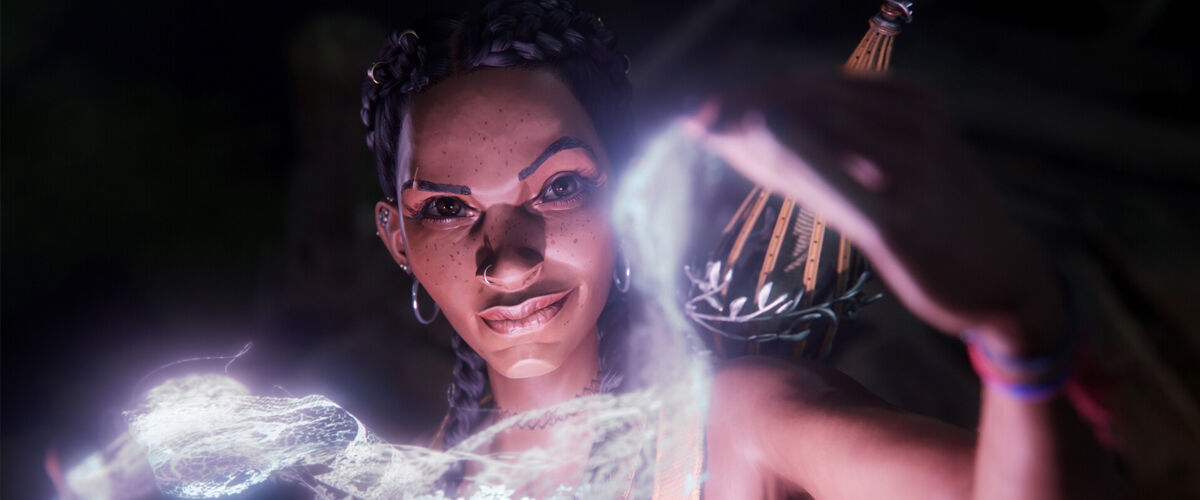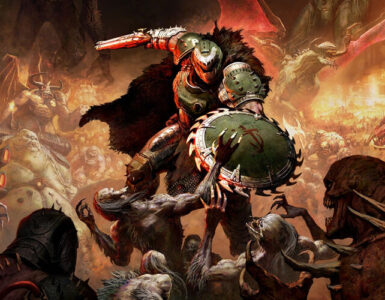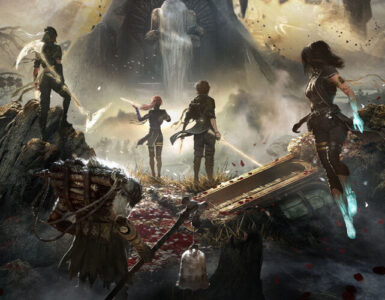The Boo Hag, Two-Toed Tom, the Bell Witch – these are just some of the many fantastical creatures stemming from American folklore and legends of the nation’s Deep South. But unlike more contemporary tales like the Headless Horseman or Bigfoot, cryptids from the deep South are largely absent in modern media, especially so in video games, which is a shame considering the wealth of cultural heritage present in the region, combining African, Indigenous and Carribbean cultures into something wholly unique, providing stories often rooted in dark themes like slavery, violence and suffering to serve as ancestral warnings to a naive younger generation.
For developer Compulsion Games, the Deep South isn’t just the backdrop for their latest title, South of Midnight, but its accompanying traditions and folklore serves as the very foundation of its experience, with Southern culture woven into every element of the game from its visuals, characters, music and narrative beats. As a studio well-known for defying convention and trying something new with every project, Compulsion’s latest endeavour breaks some new ground with its distinctive setting, fleshed-out characters and overall narrative flair, but even deep-rooted traditions can’t save it from the shallow gameplay systems used to tie the experience together.
South of Midnight is set in Prospero, a fictional town in real-world Chickasaw County, Mississippi, once a bustling logging industry that is now dying, besieged by constant hurricanes and plagued by a history of strange disappearances. Players take on the role of teenage track athlete Hazel Flood, whose trailer home gets swept away by the tide during a sudden storm, with her mother Lacey still trapped inside.
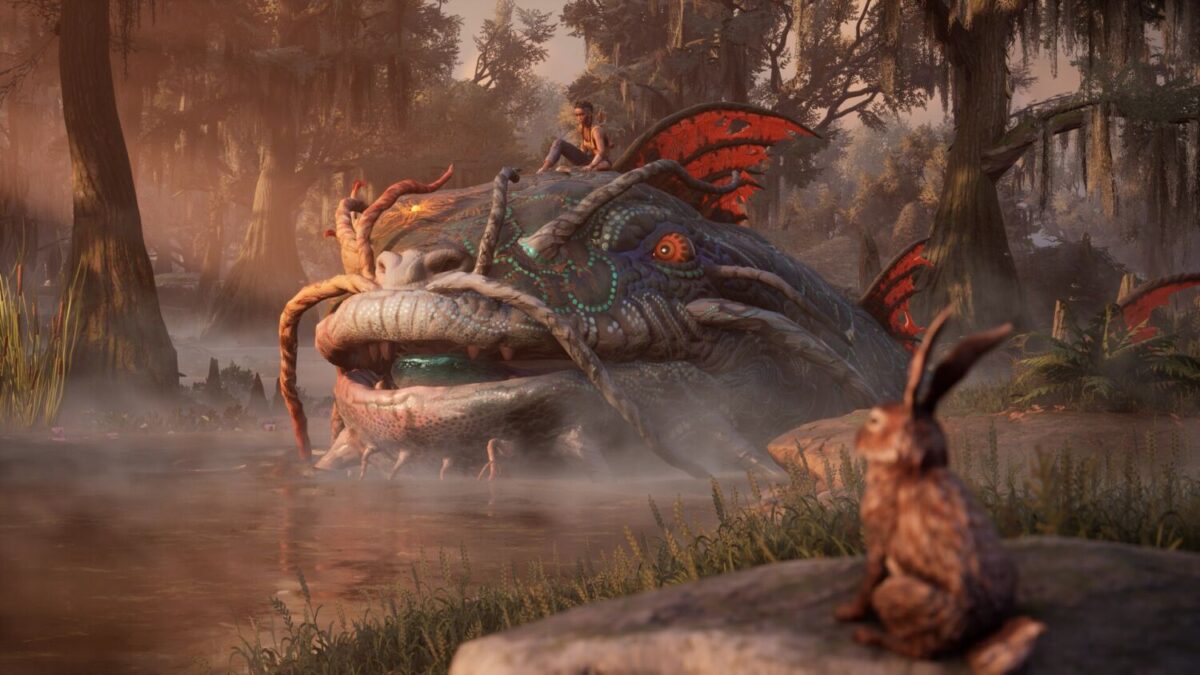
As she rushes downstream to save her mother, Hazel discovers her ability to see mystical strands around her and learns that she is a Weaver, unique individuals who are able to visualise the fabric of the universe – the Grand Tapestry – and how these strands interact with reality. With her newfound powers, she is also able to see Stigma, dangerous red growths formed when the Grand Tapestry warps due to immense emotional trauma, mutating both the environment and its inhabitants and spawning creatures known as Haints. As the only one who can mend the tears in the Grand Tapestry, Hazel is now tasked with the responsibility of unraveling the Stigma around her, to save not only her mother but her fellow townsfolk too.
Making full use of its Southern Gothic inspiration, players will encounter all manner of mystical cryptids throughout the roughly twelve-hour platforming action adventure, modern representations of actual creatures of legend, such as the aforementioned Two-Toed Tom, a once-docile pet crocodile mutated into a massive beast following years of mistreatment by its owner. Every creature isn’t just an obstacle for Hazel to overcome, though, as each tells a story of how it came to be, usually diving into heavy themes of grief or abuse, offering ample opportunities for emotional storytelling surrounding how forgiveness and acceptance can overcome even the darkest personal traumas.
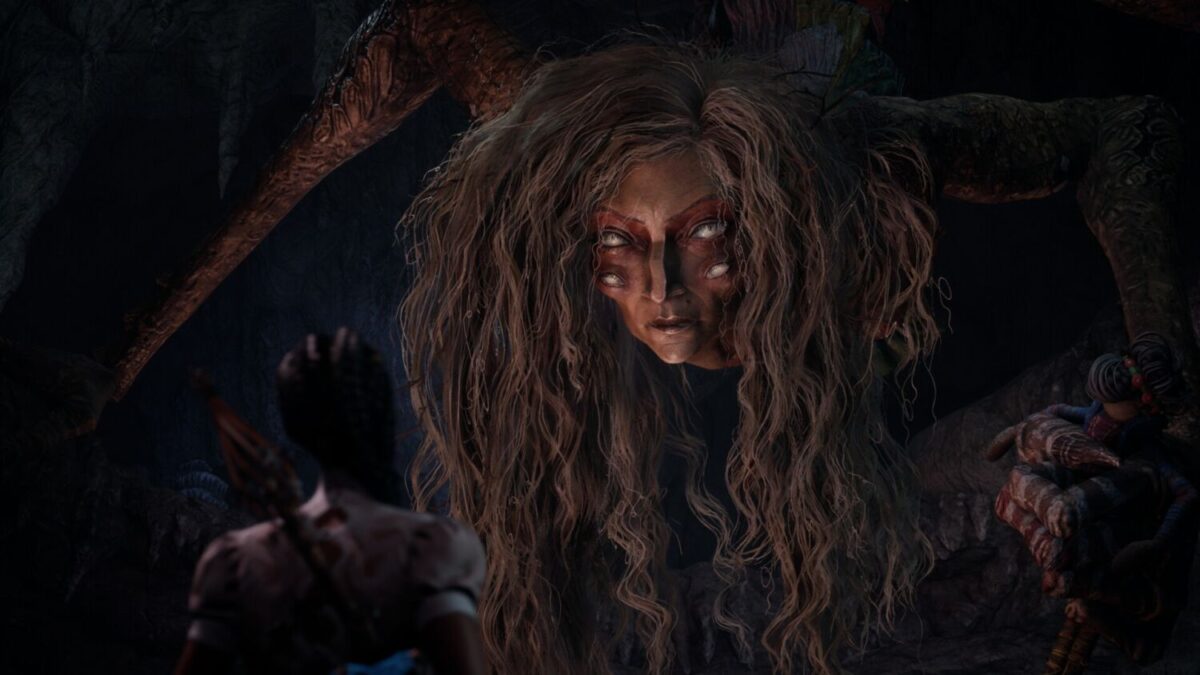
Complementing South of Midnight’s excellent use of gothic imagery is the top-notch writing and vocal performances by its lead heroine, voiced by actress Adriyan Rae (Chicago Fire). The young Weaver is easy to like and immediately relatable, reacting to the absurd occurrences around her in a way that’s hilarious, yet befitting of someone who has just seen a giant talking catfish trapped in the grip of a massive human-turned-tree. In an age of modern storytelling where heroes tend to charge headlong into even the most outrageous scenarios, it’s refreshing to see a character take a step back and actually see each situation for what it is.
The title’s strong storytelling extends to its supporting cast as well, from Catfish, who serves as Hazel’s guide throughout her adventure, to the other Prospero citizens she meets along the way, who support her with a sense of warmth and welcoming, especially heartening considering the town’s dark history shrouded in bigotry. With this, Hazel’s initial singular goal of rescuing her mother gradually evolves into something far greater than herself, incorporating themes of community and belonging into a satisfying journey of emotional healing.
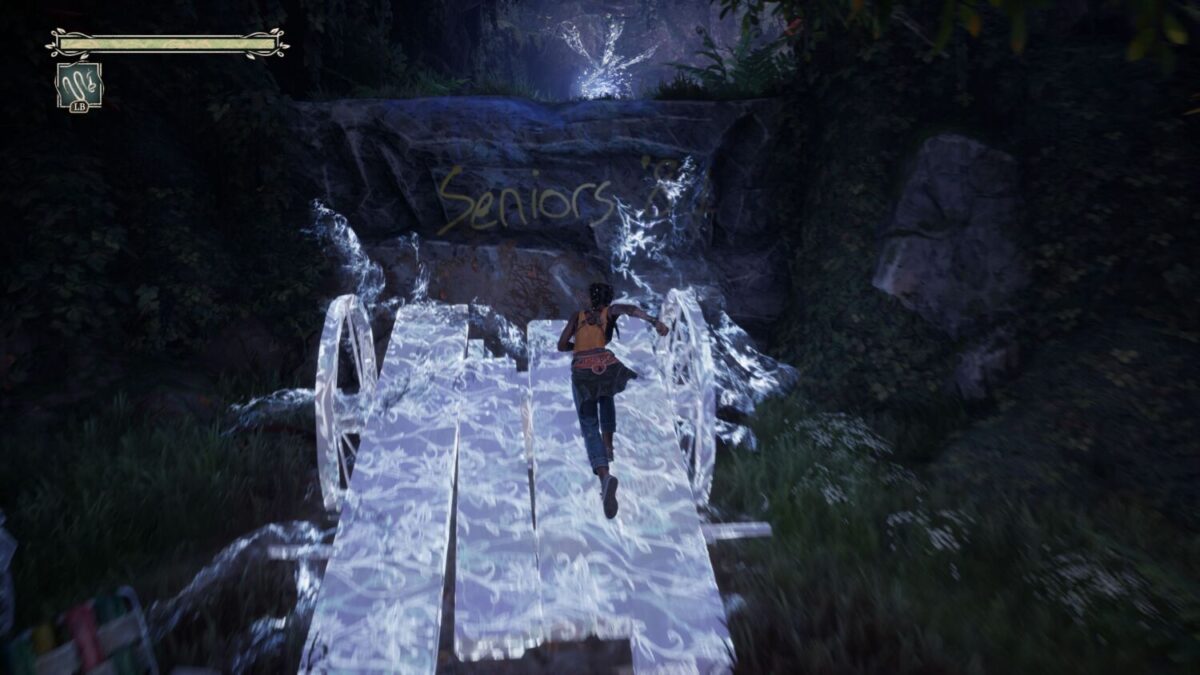
To fulfil her mission, Hazel must equip herself with the tools of a Weaver, known as Objects of Station, items imbued with mystical properties that are passed down through each generation, containing the knowledge of its previous owner. Using these tools, Hazel can see echoes of the past or pull certain objects into the present, which can then be used as temporary platforms during traversal. Using a mix of familiar platforming elements like double jumping, wall-running and gliding, players explore mostly-linear levels with optional branching paths throughout, leading to collectibles like Floof, the game’s currency that can be spent to learn new skills, health upgrades, or additional pieces of lore.
With its combination of ability-based platforming, currency hunting and light puzzle solving, South of Midnight’s traversal elements evoke a similar feel to early 2000s action platformers such as Alice: Madness Returns and the Prince of Persia franchise, offering a simple yet refreshing take in an era of bloated open-world experiences. Still, those looking for meaningful exploration in their games might be disappointed at how obvious the game’s side paths are, with nothing new to discover apart from the collectible reward waiting at the end.
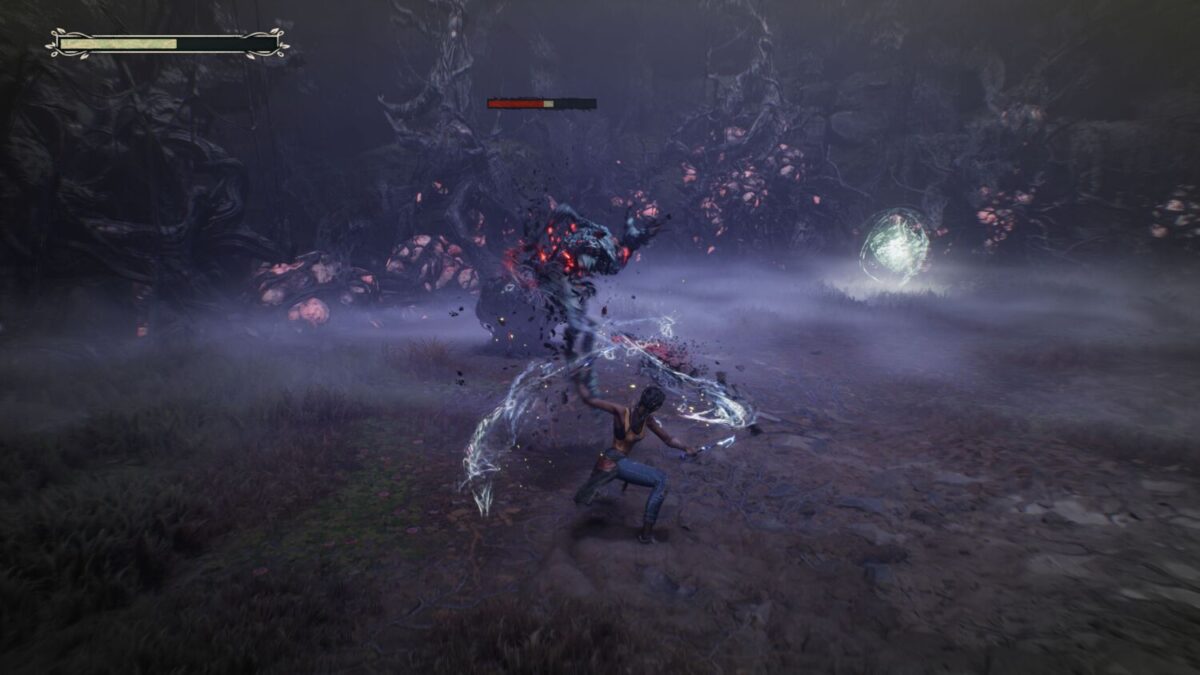
Despite having such a strong focus on narrative and platforming, the game still offers bouts of combat as a change of pace. Presented as designated zones littered around the level, combat thrusts Hazel into small enclosed arenas against Haints of various shapes and sizes, each with different attack patterns and abilities. To defeat her foes, Hazel must utilise a mix of core combat mechanics like light and heavy attacks, well-timed dodges and Weaver powers, which she will be able to unlock a total of four upgradable spells and other ability enhancements via a small skill tree. Health also doesn’t regenerate during fights, with each arena (excluding boss fights) only offering a one-time-use healing shard, so regaining health is mostly done by unravelling an enemy within a set time after defeating them.
Herein lies the game’s biggest shortcoming, as its combat never evolves to a point where it feels satisfying or intuitive. At the root of the issue are clunky controls marred with noticeable input latency, repetitive encounters, and a series of basic design flaws that hamper the experience. For one, Hazel only has one weapon available to her, a pair of hooked rods, which have an incredibly short melee hit range. This, coupled with the fact that enemies will constantly dart across the arena with immense speed and the lack of attack magnetism of any kind, means that Hazel will often end up swinging weapons at nothing if the player is even slightly out of range, with combat then boiling down to an infuriating struggle to land hits amidst constantly relocating foes.
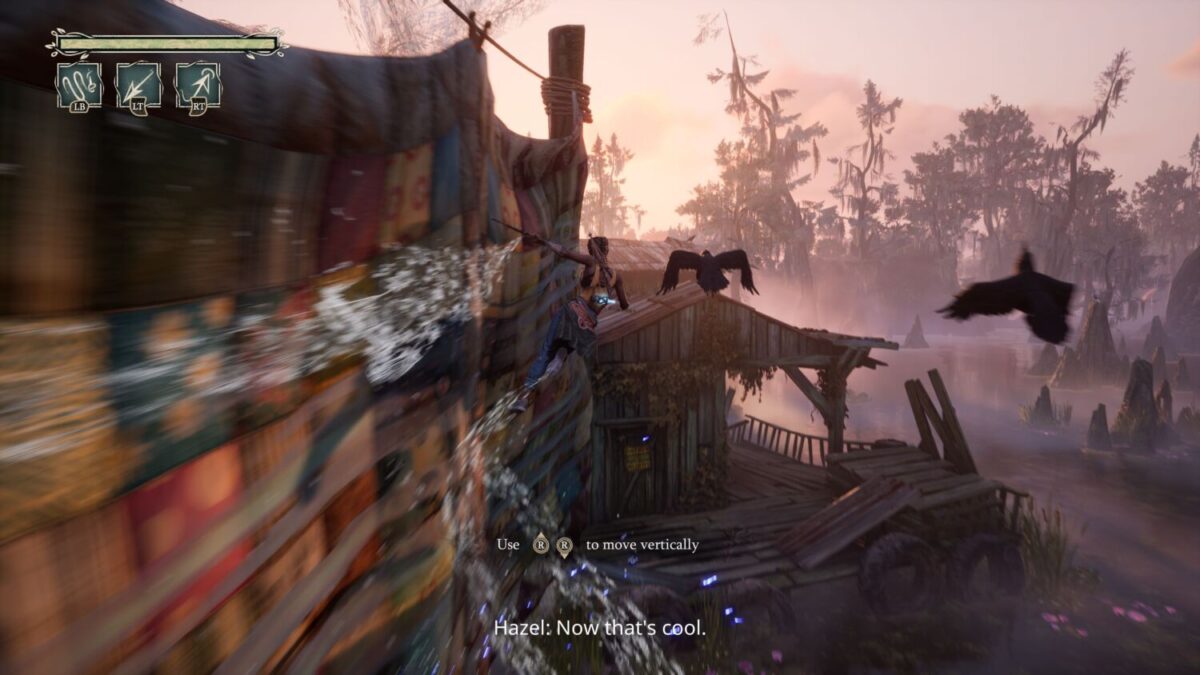
Granted, Hazel does unlock several skills as the game progresses, such as one that can pull an enemy from range or the ability to chain two dodges together, but as her powers increase, so do the number of enemies spawned in each encounter, presenting a different set of annoyances. Enemies come in both melee and ranged varieties, with the tendency to attack players from every angle and even from offscreen. This wouldn’t be an issue if the game’s dodge mechanic was fleshed out, but that is sadly not the case, with foes presenting poorly telegraphed attack patterns, and coupled with the aforementioned input latency, can lead to button presses not being registered, resulting in many a cheap hit.
To the game’s credit, it seems to be well aware that combat isn’t its strongest point, thus offering a plethora of accessibility settings related to combat, such as making health shards respawn, reducing enemy aggressiveness, or even outright skipping combat encounters altogether, with an additional option to skip boss fights as well. These features are entirely optional, of course, but are sure to be appreciated by those who simply wish to engross themselves in the game’s rich lore and culture.
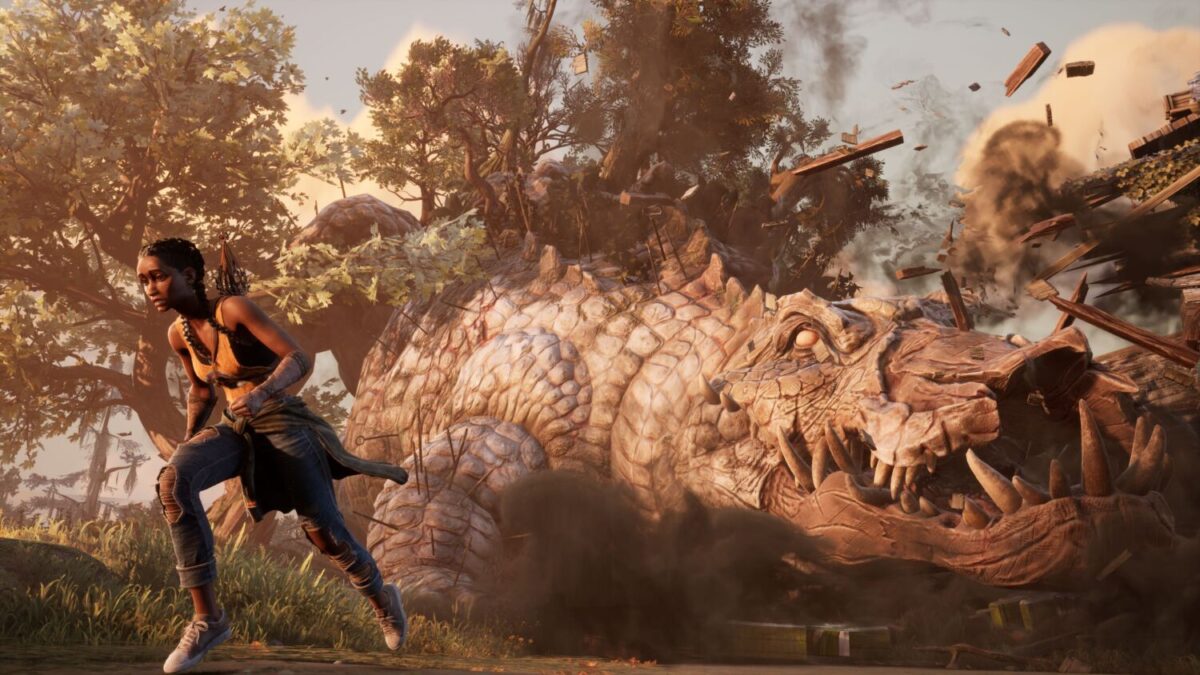
Outside of combat frustrations, the game also suffers from a lack of gameplay diversity. Levels essentially boil down to the same pattern: Fight in a set number of combat arenas to fill up a magic bottle and trap the painful memories of a mystical creature, engage in a platforming escape sequence after the final encounter to reach a magical bottle tree, use the collected memories to form a pattern and unravel the level’s main source of Stigma, which then culminates in a final boss encounter with the said creature. If combat was fleshed out and engaging, this repetitive gameplay loop would have been much more acceptable, but as it stands, its issues really mar the overall experience.
South of Midnight might not be that much fun to play, but at least it’s constantly a looker, presented in a unique stop-motion-esque visual style similar to that seen in the 2018 animated movie, Spider-Man: Into the Spider-Verse. By running different animations at separate frame rates, the resulting effect almost makes it seem like characters and other critters in the world, like foxes or badgers, are puppets being manipulated by an invisible third party, making for a visually striking look that’s pretty bold considering its genre where fluid motion is essential for precise platforming.
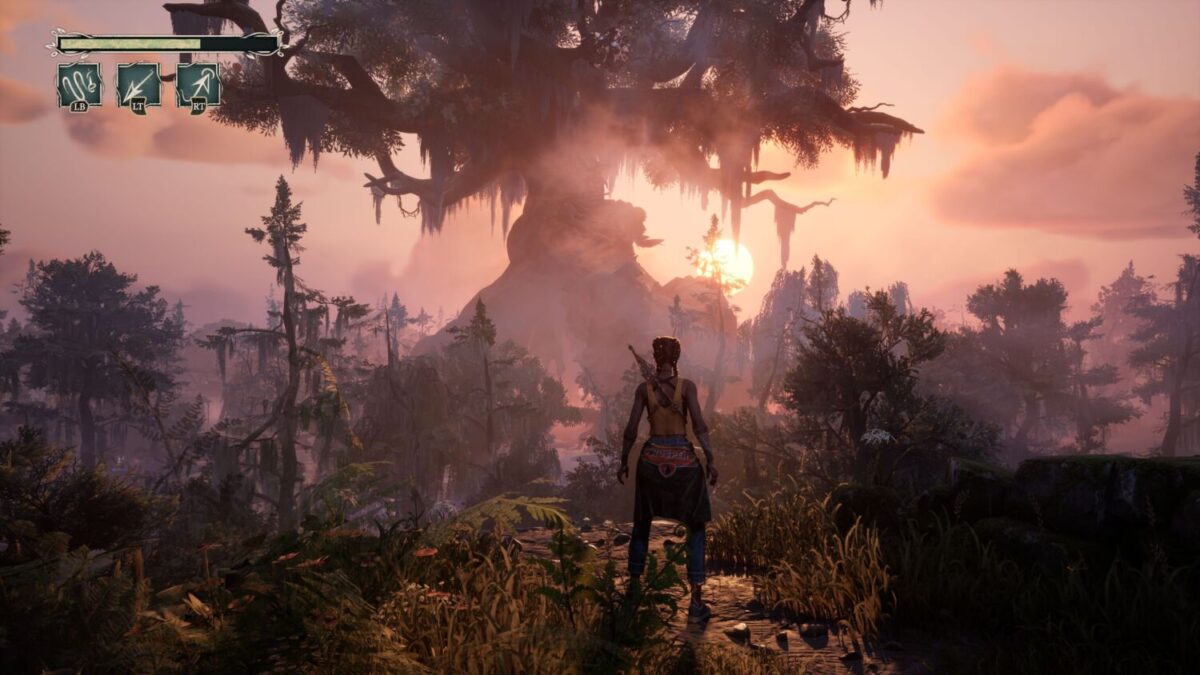
In an unintended side effect, the somewhat choppy character animations against the smoothness of the environment can undoubtedly cause motion sickness for some, especially those sensitive to frame rates, although there is an option available to completely disable the stop-motion effect during general gameplay, which admittedly does remove some of its charm in the process.
Even putting aside its striking stop-motion aesthetic, the game still wows with its handcrafted, stylised visual flair, with each location explored balancing beauty with tragedy, such as an overgrown slave plantation, where lush greenery hides its sinister past, to vibrant forests and once-bustling farmhouses now desolate and flooded. While taking in the jaw-dropping vistas and abundance of roaming wildlife, it’s hard not to notice the lack of civilisation, reflecting a county that’s now a shell of what it once was, further adding to its themes of healing and alluring visual identity.
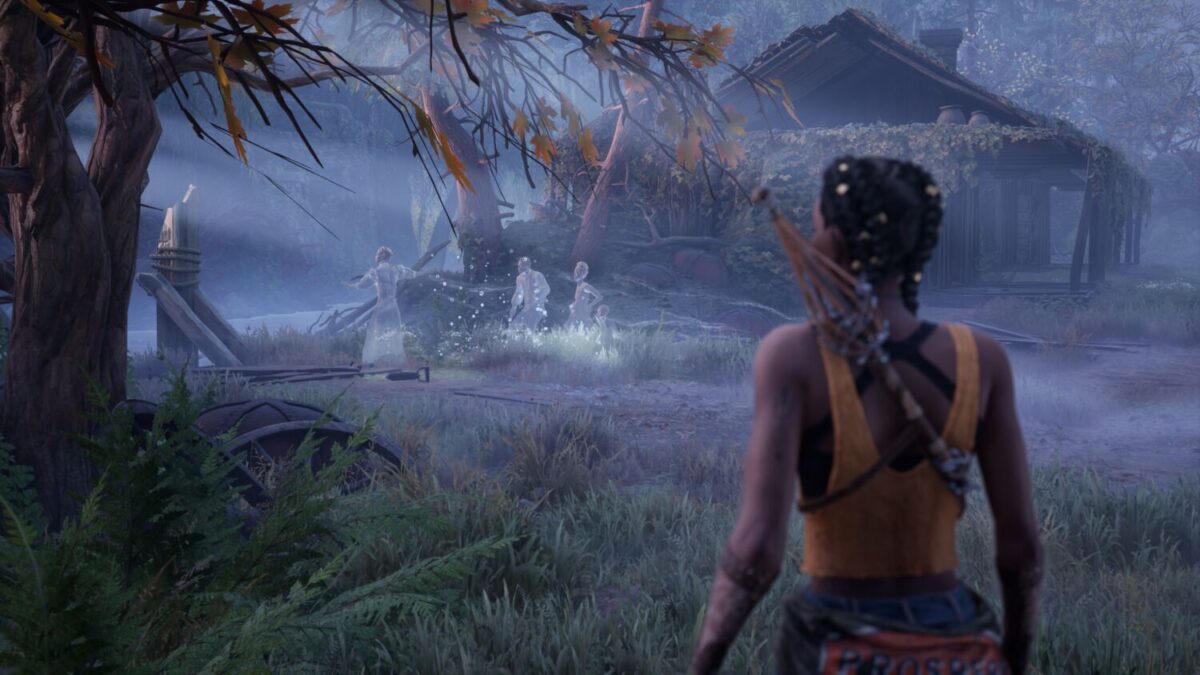
To top it all off, the game’s visual beauty is further supplemented by an amazing original soundtrack by French video game composer Olivier Derivière (Alone in the Dark, Streets of Rage 4), combining elements of Jazz, Blues and Country music with heavy usage of trumpet or banjo instrumentals. Furthermore, each vocal track also features original lyrics that link to the overarching storyline within the level, elevating the experience while simultaneously providing additional context.
As a narrative and visual experience, South of Midnight captivates in a way that’s unlike any game in recent memory, combining striking stop-motion with visuals deeply rooted in Southern Gothic lore and a mesmerising soundtrack. Still, gameplay has to be king in a video game, and this is unfortunately the one area where the experience faulters, resulting in an ultimately flawed title that’s all style, no substance.
GEEK REVIEW SCORE
Summary
Despite being set in an alluring Deep Southern backdrop with strong narrative themes of loss and healing firmly rooted in folklore, South of Midnight’s greatest tragedy is the unpolished core gameplay mechanics that hold its experience together.
Overall
7.7/10-
Gameplay - 6/10
6/10
-
Story - 8.5/10
8.5/10
-
Presentation - 9/10
9/10
-
Value - 7/10
7/10
-
Geek Satisfaction - 8/10
8/10

